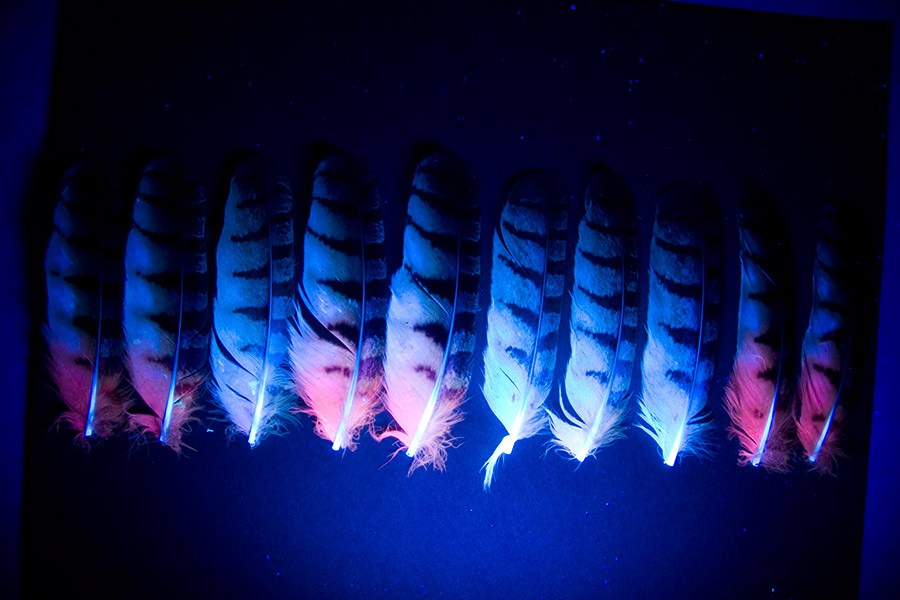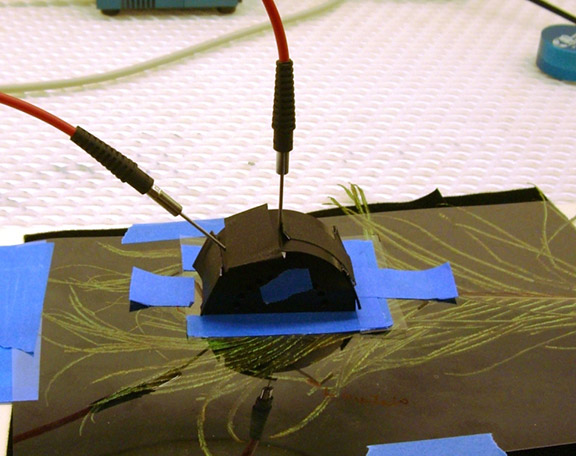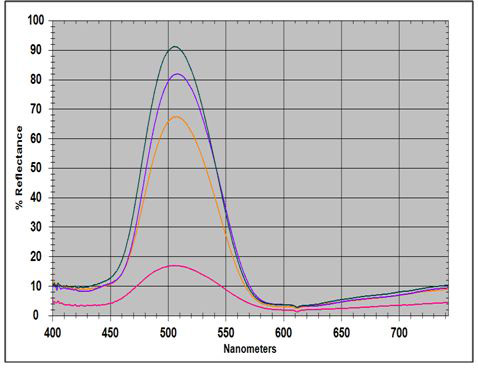Quantifying Appearance Attributes and Monitoring Appearance Changes
Ethnographic Materials with Biocolorants and Structural Colors
Unlike paints and dyes, biological colors are divided into those created by biopigments and those produced by a handful of physical phenomena that constructively and/or destructively interfere with reflected light. Structural colors are notoriously difficult to measure in a repeatable manner. Iridescence, for example, causes an angular dependence to color that gives butterfly wings and peacock feathers their enormous range of appearance effect.It was not until recently that the main parameters that specify and define the geometry of color measurement –the angle between illumination and observation axes (Θ), the angle between the measured surface plane and the illumination/observation plane (Φ), and the orientation of the surface in regard to the axis around which the sample surface can rotate(ω) – were introduced systematically into feather color measurement.
It becomes an important decision which subset of solid angles and barbule orientations imbed the best discrimination between structural and biopigment changes when estimating overall light sensitivity. This question has never been resolved in conservation research and is part of the project’s goals. The current recommendations on feather ISO blue wool sensitivities are, at best, conjectural. Some of the literature even permits a skewed interpretation based upon a few uniquely sensitive members of the superset of feather colorant systems that are possibly atypical and unique.
The overall goal was to better identify the light-sensitivity of anthropological, fine art, and natural history artifacts composed in part, or totally, of feathers.
The GCI's partner in this area of research was Ellen Pearlstein of the UCLA/Getty Master's Program in Conservation of Ethnographic and Archaeological Materials. This newly developed expertise on surface appearance complexity was applied to better understand and quantify the appearance of various challenging artistic materials such as plastic. It was used in combination with implemented methods of colorimetric analysis in an attempt to quantify the respective impact of light exposure on the different surface attributes- i.e color, gloss, texture and translucency- and to refine the understanding of the effects of light exposure on different aspects of artifact appearance.
Page updated: August 2019





